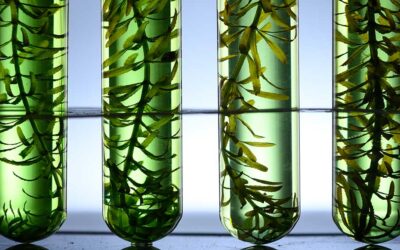The field of chemical engineering is perpetually evolving, with new technologies and methodologies constantly reshaping the landscape. One of the most pressing issues today is the need to address climate change, and chemical engineers are at the forefront of this battle. A hot topic that has gained significant traction in recent years is Carbon Capture and Storage (CCS), a technology that could potentially revolutionize our approach to mitigating greenhouse gas emissions.
Net-Zero Emissions
The goal of net-zero emissions, also known as carbon neutrality, is to balance the amount of greenhouse gases emitted into the atmosphere with the amount removed from the atmosphere. This can be achieved by reducing existing emissions while increasing the removal of greenhouse gases, often through reforestation or carbon capture and storage technologies.
The aim is to effectively reduce the net amount of greenhouse gases, particularly carbon dioxide, being added to the atmosphere to zero. This is considered crucial in the fight against climate change, as it would halt the increase in the Earth’s average temperature caused by human activities.
Many countries, cities, and companies around the world have set net-zero emissions targets for the mid-to-late 21st century, in line with scientific advice that global carbon emissions need to reach net-zero by 2050 to limit global warming to 1.5 degrees Celsius above pre-industrial levels, as per the Paris Agreement.
The Promise of Carbon Capture and Storage
CCS is a technology that captures carbon dioxide (CO2) emissions from large point sources, such as fossil fuel power plants, and transports it to a storage site, usually deep underground. The goal is to prevent the release of large quantities of CO2 into the atmosphere, thereby mitigating the effects of global warming.
The potential of CCS is immense. According to the International Energy Agency, CCS could contribute to nearly a fifth of the CO2 reductions by 2050. This technology could be a game-changer, allowing us to continue using fossil fuels while significantly reducing their environmental impact.
Challenges in Implementing CCS
Despite its potential, the implementation of CCS is not without challenges. The technology is still in its infancy and requires significant investment in research, development, and deployment. The process of capturing CO2 is energy-intensive, which can increase the operational costs of power plants. Furthermore, the transportation and storage of CO2 pose logistical and safety concerns that must be addressed.
Another major challenge is the lack of a robust regulatory framework for CCS. This includes regulations for the safe and permanent storage of CO2 and policies to incentivize the adoption of CCS technology. Without these, the widespread implementation of CCS remains a distant dream.
The Role of Chemical Engineers
Chemical engineers play a critical role in overcoming these challenges. They are involved in designing and optimizing CCS processes, ensuring they are efficient, safe, and cost-effective. This includes developing new materials and processes for CO2 capture, designing pipelines for CO2 transportation, and studying the behavior of CO2 in storage sites to prevent leaks.
Chemical engineers are also involved in assessing the lifecycle of CCS systems, from the extraction of fossil fuels to the storage of CO2. This helps to understand the overall environmental impact of CCS and identify improvement areas.
Moreover, chemical engineers are instrumental in policy discussions about CCS. They provide the technical expertise needed to develop effective regulations and incentives. By bridging the gap between science and policy, chemical engineers can help drive CCS adoption.
The Future of CCS
The future of CCS is promising but uncertain. The technology has the potential to reduce CO2 emissions significantly, but its success depends on overcoming numerous technical and regulatory challenges.
However, the urgency of climate change demands that we explore all available options, and CCS is a promising tool in our arsenal. With continued research and development and with the support of robust policies, CCS could play a major role in our transition to a sustainable future.
New Developments — Recycling Carbon?
Researchers at the Pacific Northwest National Laboratory (PNNL) are pioneering a cost-effective pathway for carbon capture via carbon upcycling, marking a significant stride in the decarbonization process and edging closer to the net-zero emissions goal. Researchers at PNNL, a Department of Energy affiliate, have significantly advanced in their quest to render carbon capture more attainable and economically viable. They have engineered an innovative system that not only captures CO2 efficiently but also converts it into methanol, a chemical widely used across various industries, most cost-effectively yet. Methanol serves many purposes as a fuel, solvent, and a vital component in plastics, paint, construction materials, and automobile parts. The conversion of CO2 into practical substances like methanol presents a viable route for industrial firms to capture and repurpose their carbon emissions.




